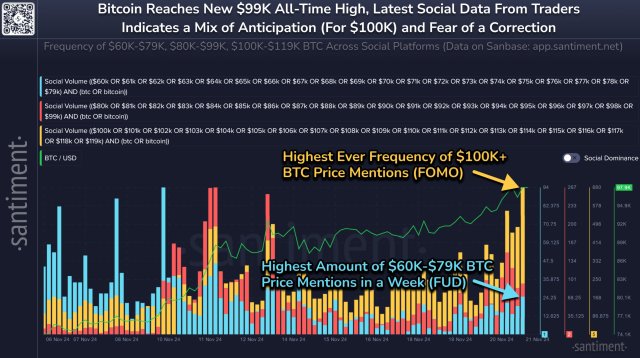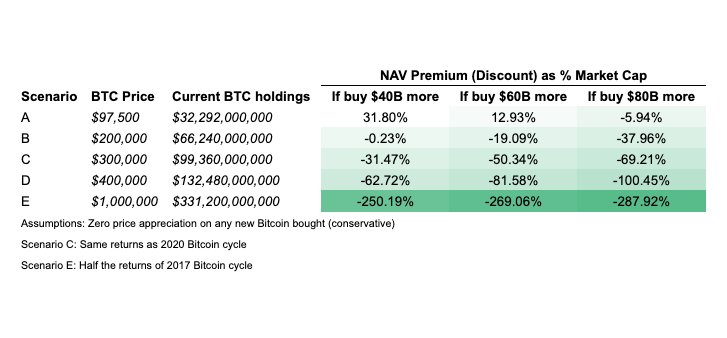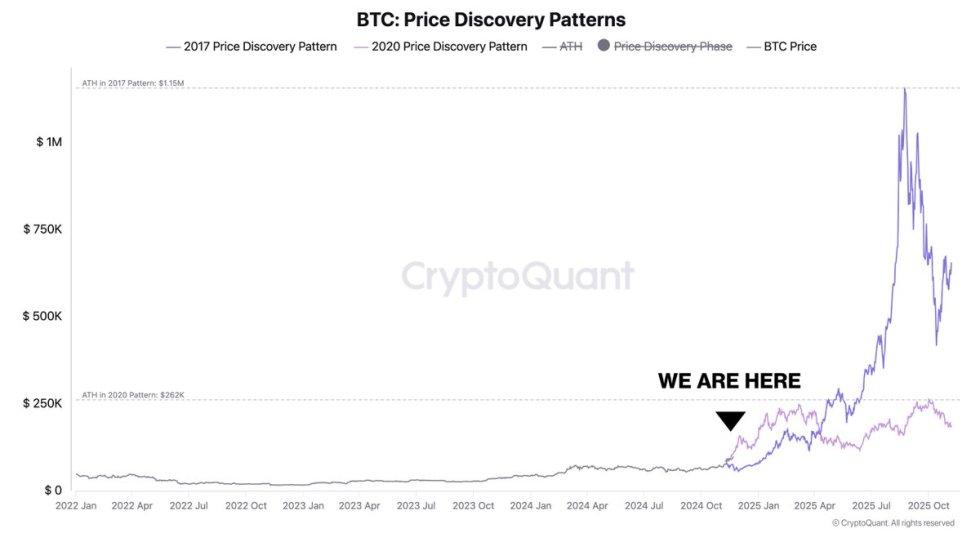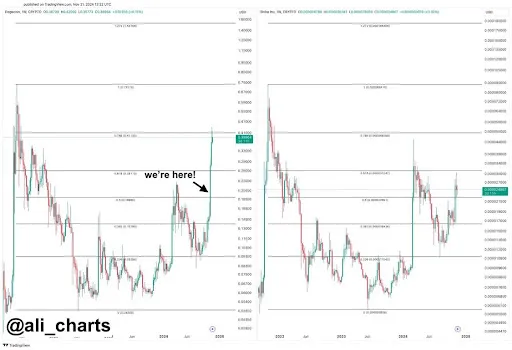 | Bitcoin Hashrate Analysis and Future PredictionsSummaryHashrate is a direct function of Bitcoin price and transaction fees. The higher the price of bitcoin, the higher the total hashrate that can be supported. A model was developed to estimate hashrate based on price, fees, electricity costs, and mining efficiency. This model predicts future supported hashrate levels using several different price prediction models. The basic formula for this model is as follows: This model predicts that hashrate will level off by 2040 and then decrease, even using generous price prediction models. Halving cycles decrease block rewards by half approximately every 4 years, price cannot balance out diminishing rewards for miners. Because of advancements in computing, hashrate must continually grow to maintain network security. A static or decreasing hashrate can eventually lead to compromised network security. IntroductionThe size of Bitcoin’s mining network can be measured by its total hashrate. A larger hashrate means more computing power contributing to the network and a higher amount of security. Higher hashrate is also associated with more total energy usage. Hashrate is related to the number of machines mining Bitcoin and the efficiency of those machines. Incentives to mine Bitcoin are directly related to block reward size, Bitcoin’s price, and transaction fees and inversely related to cost of electricity. By calculating the total rewards per hour and dividing by cost of electricity, total supported hash rate can be estimated. This estimate is a simplification and ignores overhead costs to run mining facilities, time to build up or ramp down a mining facility, and locality adjustments for costs for electricity generation. With those caveats, this calculation accurately models Bitcoin’s actual hash rate. For future predictions the hash model used several different future price prediction models to estimate future hashrate as a function of Bitcoin price. Increases in cost of electricity over time and mining efficiency over time were also modeled. This model is for total supported hashrate and may differ from actual hashrate. Actual hashrates less than the total supported hashrate imply a very profitable mining network, whereas actual hashrates greater than the total supported hashrate imply mining at a loss. Real world model results Figure 1 Actual Hashrate vs Predicted total supported hashrate Figure 2 Actual Hashrate vs Predicted total supported hashrate (Log scale) The real world model uses data from blockchain.com for actual hashrate and transaction fees. Block reward rate is incorporated into the model based on halving dates. Electricity costs were the average cost of electricity for Dallas-Fort Worth-Arlington, TX from US Bureau of Labor Statistics. This locality was selected due to hosting some of the largest Bitcoin mining facilities in the world. Mining efficiency was gathered from Cambridge’s Bitcion mining consumption study. As shown in Figure 1, estimated total supported hashrate closely follows the actual hashrate of the mining network. The boom in Bitcoin price in 2021 led to a time of extremely profitable mining. After the crash in 2022 mining has been operating at an estimated aggregate loss. The recent price surge has once again brought mining back to profitability. Future predictions MethodologyFigure 3 Price models used for future hashrate predictions Four different price models were selected for future predictions to build the hashrate prediction model. This analysis does not condone any of these models, they are simply used to demonstrate how hashrate will be affected by future price movements. This analysis should not be used to predict future price. The rainbow model uses a formula from the oft cited “rainbow chart” with the following formula Where t is the number of days since January 1, 2012. And LN is the natural log function. The exponential growth models assume a 10% and 20% annual growth for bitcoin price respectively. The 70k flat model assumes a flat 70k price. Figure 4 Mining Efficiency Model Mining Efficiency was modeled using efficiency data from Cambridge’s mining power consumption study. Mining efficiency results before 2018 were ignored due to high variance. The model for mining efficiency uses the following formula: Where t is the number od days since 2/13/2018. Figure 5 Average Electricity costs in TX Electricity costs were modeled using monthly data for average electricity costs in Dallas-Fort Worth-Arlington, TX. The model uses the following formula: Where t is the number of months since 11/1/1978. Figure 6 Energy cost projections Transaction fees are based on demand for transaction quantity and cannot be easily predicted. 10% was added to the total income for mining to account for transaction fees. Transaction fees would become extremely constricting if they grew at the same rate as some of the more generous price prediction models, so this is not an accurate transaction fee model, but the effect on the shape of the graph is minimal, so they were included in the final model. ResultsFigure 7 Future hashrate predictions As shown in Figure 7, predicted maximum hashrate rate peaks in 2039 and then declines for each price model. Hash rate peaks at 1.4*1011 TH for the rainbow model, 2.7*1010 TH for 20% exponential model, 7.0 * 109 TH for the 10% exponential model, and 1.6*109 TH for the 70k flat model. Figure 8 Future hashrate predictions reduced y axis scale Energy DemandThe same model can be used to predict total energy consumption supported by the network. Figure 9 Total KWh per hour demanded by network Modeling the number of KWh the network can consume per hour shows that energy consumption should decrease with a 10% exponential price model or 70k flat model. Energy consumption remains relatively stable with a 20% exponential model. A rainbow model would increase the energy demand of the network up to a peak of 60 GWh per hour by 2039. This would be a yearly demand of about 525 TWh which is approximately 14% of the US’s yearly electricity usage. ConclusionsEach halving cycle puts a strain on the Bitcoin mining network as rewards are cut in half. Generous price prediction models can subsidize the loss due to halving, but the balance is not sustainable in the long term. Hashrate is predicted to level off and decrease after 2039. Stagnant or decreasing network hashrate can lead to compromised network security. Transaction fees would have to grow at an extreme rate in order to balance the decreased rewards per halving. Incentives for miners will potentially need to be reexamined within several decades for the network to be sustainable. Sources: US. Bureau of labor statistics https://www.blockchaincenter.net/en/bitcoin-rainbow-chart/ Cambridge bitcoin Electricity consumption Index [link] [comments] |

You can get bonuses upto $100 FREE BONUS when you:
💰 Install these recommended apps:
💲 SocialGood - 100% Crypto Back on Everyday Shopping
💲 xPortal - The DeFi For The Next Billion
💲 CryptoTab Browser - Lightweight, fast, and ready to mine!
💰 Register on these recommended exchanges:
🟡 Binance🟡 Bitfinex🟡 Bitmart🟡 Bittrex🟡 Bitget
🟡 CoinEx🟡 Crypto.com🟡 Gate.io🟡 Huobi🟡 Kucoin.



















Comments